Frozen Shoulder Treatment, Symptoms, Exercise & Risk फ्रोजन शोल्डर | एडहेसिव कैप्सूलाइटिस
- 2.24K
- 3 years ago
Dr. Manpal Singh Narula
Dr. Manpal Singh Narula
Frozen Shoulder Treatment | Adhesive Capsulitis
In this video SimpliHealth expert orthopedic Dr. MS Narula is talking about frozen shoulder treatment(फ्रोज़न शोल्डर).
What is a frozen shoulder?
People often confuse all kinds of shoulder pains with frozen shoulders which is generally not true. In this video our experts would like to share with you that a frozen shoulder is a particular entity ; there is a specific pattern to it. Our shoulder joint is like a ball and socket joint surrounded by muscles and ligaments, and there is a connective tissue that helps in the binding, called a capsule. So in a frozen shoulder, there is a tightening in the connective tissue or capsule. Because of some inflammation or some scarring. This capsule gets tight, which causes pain and stiffness.This particular disease is called a frozen shoulder.
Adhesive Capsulitis | Frozen Shoulder Treatment
The frozen shoulder is also known as adhesive capsulitis. It is periarthritis.In arthritis, there is a tear in the bones of the joints. There is no problem in the bone however, there is a formation of adhesion in the soft tissue envelope around the bones, which is known as adhesive capsulitis.
Frozen Shoulder Symptoms
Broadly in Orthopaedic practices, experts discuss them in three stages:
- Freezing
- Frozen
- Thawing
In the freezing stage, there is a pain in a specific or particular position like when you are reaching out to something or doing some overhead movements or especially when you are taking your hand to your back, turning the shoulder towards the backside,, then you feel this pain. So it starts paining when you do a particular moment, and this pain can get very severe and is eventually worse at night,, and this pain limits the movement of the shoulder. And please remember the frozen shoulder doesn’t need to only remain in the shoulder.
It can go down the arm, or it can go up till the neck,, even in the back of the shoulder, so it is a diffused pain that gradually gets worse, especially at night, which further restricts your movement . This is the first called a freezing stage. The second stage is the frozen stage.
In the frozen stage, this pain starts receding a little but there is an increase in the stiffness, so the pain begins to reduce, but it restricts the movement of the shoulder joint. So a patient cannot sleep on that shoulder, and all over the joint movements are limited, especially, when you take the hand to your back. And of course, the last stage is thawing. Simultaneously,, there is a reduction in the pain and stiffness. The frozen shoulder is mostly a self-limiting condition. It heals in one to one and a half years in most cases.
Who is at risk of a frozen shoulder? and, How is it diagnosed?
Usually, this condition happens after 40 and between 45 to 55 years old. Mostly in females. Its occurrence varies from 70%percent in females to 30% in males. There are certain risk factors for example, people who have diabetes may have a very intense frozen shoulder and may last longer. Then there are specific hormonal changes like hypothyroidism, then of course there are certain neurological symptoms like cervical disease or there is some muscle problem in the shoulder. And of course do remember this there is a secondary frozen shoulder in which whatever be the reason if there is no movement in the shoulder could be an injury due to which we have tied our shoulder, could be some surgery around the shoulder, could be some neuromuscular weakness due to which we are not able to move our shoulder for a long period of time.
In these people above the age of 45 to 65 may develop this frozen shoulder .Mostly it is diagnosed clinically. The symptoms cannot (as I mentioned before) be diagnosed in the X-ray because in x-ray, only the bones are visible. I explained earlier that there is no problem in the bones. So the X-ray of the frozen shoulder is usually normal. It is diagnosed either by ultrasound,, and of course the most specific technique used these days is MRI. MRI clearly diagnoses it.
Frozen Shoulder Treatment
Now we come to treatment. As our expert told you before, frozen shoulder usually subsides in 1-1.5 years on its own but it may last longer, especially in diabetes. The purpose of our treatment is to reduce the pain and restore the movements at the earliest possible time, and the patient does not have to suffer any disability.
In the initial stages experts prescribe anti-inflammatory or routine painkillers to reduce the inflammation and perform hot or cold therapy. Physiotherapy remains the mainstay of the treatment.Almost 80% of the role is played by physiotherapy. There are some exercises as I told you there is reduction in the pain but there is gradual increase in stiffness. To control the stiffness and keep the joint mobile as much as possible in the frozen shoulder experts specially tell the patient not to restrict the movement of the shoulder.
Yes, if a particular exercise is hurting your shoulder, don’t do it but keep the shoulder mobile. Visit your physiotherapist for some sessions. And if you are experiencing a lot of pain due to which you are not able to do exercise then experts give them steroid injections which are very successful and effective in treating this. The purpose of the steroid is to reduce the inflammation so that there is reduction in the pain so that you can perform exercise.
So please remember the medicines and injection treatment is only successful if you continue or follow it up with the exercises. So in the initial stage, this treatment is enough and most people recover in a few months. In very rare cases surgery is required in which arthroscopy which uses a lighted telescope and is used to break the adhesions and scars. In a few cases experts may manipulate the adhesions under anaesthesia. So these frozen shoulders can be managed conservatively just with physical rehabilitation and mild anti-inflammatory.
Frozen Shoulder Exercises(फ्रोजन शोल्डर की एक्सरसाइजेज)
Next very common question asked to us in the OPDs is regarding the exercises that help in frozen Shoulders. As I have told you before, Physiotherapy will remain a very important part. There are some exercises which you can do at your home but I will insist that you visit your Physiotherapist and do some sessions with them. And the exercises that they teach; can be done at home after hot/cold therapy. Initially the exercises experts recommend is the pendulum exercise in which the patient bends down and moves his shoulder in a pendulum style. Besides that some forward movements and circular motions are also recommended.
Then, another movement is to lie on the back and take the arm behind the back. Then there is a towel stretch exercise in which you hold the towel and stretch it behind the back. Few are crossbody stretches in which one takes the arm across the chest and outward external rotation in which you take a band and rotate it externally. These are a set of exercises – another one where one hand supports the upward movement of the shoulder, take the hand up against the wall.
So these are some set of exercises which you should do regularly and remember it is not like that you went to a physiotherapist for exercise and came home .You must do these exercises at home as well .Remember that the frozen shoulder is making our body stiff and we have to fight it to open it. So keep doing the exercises and take some anti-inflammatories .If it is severe then do consult an Orthopaedic surgeon.
Thank you .






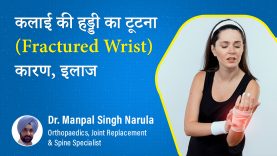
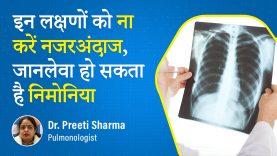


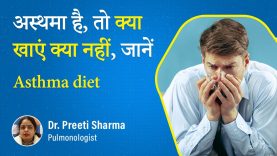

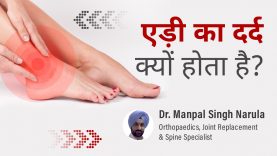

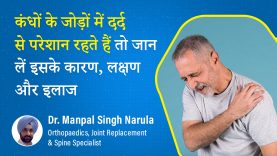
Comments (0)